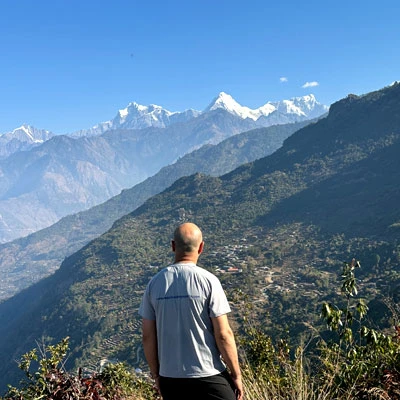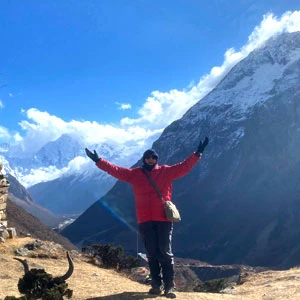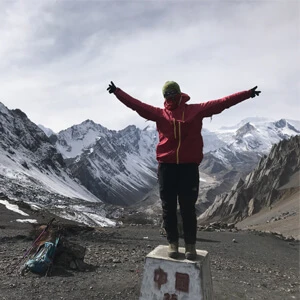Understanding The Restricted Status Of Manaslu And Tsum Valley
The Manaslu and Tsum Valley regions in northern Nepal attract trekkers with their isolation, raw Himalayan beauty, and deeply rooted Tibetan Buddhist culture. But despite their allure, these regions remain restricted trekking zones, meaning you cannot legally do the Manaslu Tsum Valley trek without a guide.
The Nepalese government began opening the Manaslu region to foreign trekkers in the early 1990s. Prior to that, the area remained closed to outsiders, even after the Japanese first climbed Mount Manaslu in 1956. When trekking finally became accessible, strict regulations were introduced to protect the fragile ecosystem and the unique Himalayan culture of the region.
Similarly, the Tsum Valley, one of Nepal’s most secluded areas, stayed isolated until the late 2000s. When it opened to trekkers, it came with heavy restrictions to preserve its untouched heritage, sacred monasteries, and traditional lifestyle.
Nepal classifies Manaslu and Tsum Valley as restricted areas for several reasons:
- To safeguard remote, culturally sensitive communities.
- To preserve endangered wildlife and pristine landscapes.
- To control the impact of mass tourism on local traditions.
Because of this restricted status, solo trekking in Manaslu and Tsum Valley is not allowed. You must must travel with a registered guide and obtain special permits through a government-authorized agency. These rules are especially enforced due to the region’s proximity to the Tibet (China) border, which also adds a geopolitical layer to the regulation.
If you are planning a Manaslu Tsum Valley trek without a guide, it's important to understand that the law does not permit unguided travel in these regions, even if you are an experienced hiker or adventure traveler.
Permit Requirements For The Manaslu Tsum Valley Trek In 2025
To trek within the remote areas of Manaslu and Tsum Valley regions in Nepal, you will need special permits.
- Manaslu Special Permit: It is essential for entering the Manaslu Restricted Area, and is only available through registered trekking agencies and must be obtained in advance. This permit costs vary depending on the season, with higher rates during peak trekking seasons like Spring and Autumn.
- Manaslu Conservation Area Project (MCAP) Permit: It is required for trekking in the Manaslu Conservation Area. This permit helps fund conservation efforts and wildlife protection within the region.
- Annapurna Conservation Area Project (ACAP) Permit: Since parts of this trek fall under the Annapurna Conservation Area, you will need an ACAP permit. This fee contributes to the conservation efforts of the Annapurna region.
Can You Obtain Manaslu And Tsum Valley Permits Without A Guide?
No, you cannot obtain permits for the Manaslu and Tsum Valley trek without a guide. Nepal’s trekking regulations clearly prohibit solo trekking in Manaslu Tsum Valley due to the region’s restricted area status. According to official guidelines from the Nepal Tourism Board and the Department of Immigration, all trekkers must be accompanied by a licensed trekking guide to enter this region legally.
The government enforces this rule to ensure traveler safety, cultural sensitivity, and environmental protection in these geopolitically sensitive Himalayan zones. As a result, only authorized Nepal-based trekking agencies can apply for the required permits on your behalf.
To secure your Manaslu Restricted Area Permit (RAP) and Tsum Valley Permit, your agency must submit:
- A copy of your passport
- Your confirmed itinerary
- The full name and license number of your registered guide
These details are mandatory. Without a guide listed in the permit application, the system will automatically reject your request.
Exceptions (If Any) To The Guide Requirement
As of now, there are no exceptions to the guide requirement for the Manaslu and Tsum Valley treks. This rule applies to everyone, regardless of experience or the length of the trek. Even though some regions in Nepal have recently relaxed their rules regarding solo trekking, Manaslu and Tsum Valley regions remain strictly controlled.
Why Trekking Manaslu And Tsum Valley Without A Guide Is Risky?
Attempting the Manaslu Tsum Valley trek without a guide poses serious risks, legally and culturally. Nepalese law strictly prohibits solo trekking in Manaslu and Tsum Valley, and violating this regulation can result in fines, permit cancellation, or even being denied entry at trail checkpoints.
More importantly, trekking solo in these remote and restricted Himalayan zones comes with significant dangers. The trails through Manaslu and Tsum Valley lack clear signage, making it easy to get lost. With no cell reception or established emergency infrastructure in many areas, getting help during an injury or altitude sickness episode becomes nearly impossible.
Without a licensed local guide, you will also lose the benefit of someone who understands high-altitude trekking protocols, local dialects, and culturally sensitive customs.
Challenges Of Solo Trekking In Manaslu And Tsum Valley
Attempting to trek Manaslu and Tsum Valley without a guide presents a series of daunting challenges. These remote and rugged regions are not designed for solo trekkers. Therefore, here are some of the key difficulties you will face when navigating these majestic valleys without expert guidance.
Navigation Difficulties
Navigating the Manaslu Circuit and Tsum Valley trails without a guide presents one of the biggest risks for solo trekkers. Although the region rewards you with breathtaking Himalayan scenery, the trails themselves are remote, rugged, and often poorly marked.
In many areas, especially through dense forests, narrow ridges, or high-altitude passes, clear signposts are either missing or misleading. Likewise, solo trekking in Manaslu Tsum Valley becomes even more challenging when fog, snowfall, or landslides obscure the already vague trail paths.
To make matters worse, reliable trail maps are hard to come by, and GPS signals often fail in deep valleys and mountainous terrain. Without local guidance or up-to-date route knowledge, you can easily lose your way.
In contrast, licensed guides help you adjust to changing weather conditions, avoid trail hazards, and communicate with locals for directions or support. Without that expertise, navigating the Manaslu region becomes a high-stakes gamble.
Language Barrier
In Tsum Valley and other areas of the Manaslu Circuit, English speakers are a rarity. The region’s population primarily speaks Nepali or local dialects, with limited fluency in English.
Hence, if you are trekking without a guide, communication becomes an obstacle, especially in smaller villages. Whether you are asking for directions, negotiating for accommodation, or seeking help in an emergency, the language barrier can create serious frustration.
Logistics And Accommodation
The small villages along the trek offer basic guesthouses, but there is no guarantee of availability, especially during the peak trekking seasons. In many places, accommodations are limited, and without a guide’s local knowledge, it may be a nightmare to book accommodation.
Basically, guides are familiar with where to stay, how to negotiate room rates, and how to ensure that trekkers are fed, even in the most isolated spots. Hence, without their help, you may not find a place to stay or risk staying in places that may not meet your standards for comfort or safety.
Emergency Situations
As the Manalsu and Tsum Valley treks reach heights above 5,000 meters (16,404 feet), you are at higher risks of developing altitude-related illness. In such events of an emergency, whether due to altitude sickness, a fall, or any other injury, you may not be able to react accordingly.
Here, having a licensed guide will help you with their knowledge of first aid and evacuation procedures. They are not only trained in emergency care but also know how to access evacuation resources, arrange for a helicopter rescue if needed, and manage high-risk situations.
Culturally Sensitive And Local Norms
The areas of Manaslu and Tsum Valley are deeply spiritual, and you may often pass by sacred monasteries, prayer wheels, and religious sites. If you are trekking solo in Manaslu Tsum Valley, you will not be familiar with the local customs, hence there will be a risk of unintentionally offending locals by failing to follow important cultural practices.
In such moments, a guide can offer valuable insights into the significance of certain rituals or places. They also help you navigate the delicate balance between curiosity and respect for the traditions of the region.
The Cost Of Hiring Guide For The Manaslu Tsum Valley Trek
The cost of hiring a professional guide for the Manaslu and Tsum Valley Trek typically ranges from USD 25 to 35 per day. While this may seem like a substantial amount, it is important to consider what this price includes and how it contributes to your overall trekking experience.
The daily guide tips include all their professional services from navigation, emergency support, to handling every need. This cost includes their wages and it also covers their everyday meals and accommodation along the trail.
Beside this major cost, you will need to pay additional to them in the form of tips. In Nepal, tipping your guide is customary and is often expected as a sign of appreciation for their hard work and commitment.
Here, the tip amount can vary based on the quality of service and the length of the trek, but generally, you should budget around 10% to 15% of the total trek cost for tipping. For a typical Manaslu and Tsum Valley trek, this can range from USD 100 to 200 USD per guide, depending on how long your trek lasts.
Alternative Options For Budget Conscious Trekkers
If you are looking to explore the stunning Manaslu and Tsum Valley regions on a budget, there are several cost-effective alternatives to traditional solo trekking. While hiring a licensed guide is mandatory, there are ways to reduce costs without sacrificing the quality of the experience.
Joining Group Manaslu Tsum Valley Treks To Share Guide Costs
One of the easiest ways to reduce the cost of a trek in Manaslu and Tsum Valley is by joining a group trek. In group trek, you will get to share the costs of the guide without compromising on the quality of the experience. However, in these group settings, you will need to follow the fixed group departures.
Finding Budget-Friendly Guide Cost For Manaslu Tsum Valley
If you prefer a more private trekking experience but still want to keep costs down, you should search budget-friendly guide services. While the standard price for a licensed guide can be high, there are smaller, locally-based agencies and independent guides that offer more affordable rates.
Having said that, these guides may not have the same high-end services but they are often just as knowledgeable about the region. However, you must first check the guide’s credentials and experience before booking.
Trekking With Porter-Guide For Manaslu And Tsum Valley
Another great way to reduce the cost of your Manaslu and Tsum Valley trek is by hiring a porter-guide. A porter-guide is a professional who not only carries your luggage but also acts as a guide during your trek.
This dual role can be more economical compared to hiring both a separate porter and guide. They will help you navigate the trails, assist with logistics, and offer insight into the local culture.
Conclusion
Trekking Manaslu and Tsum Valley without a guide is simply not possible due to the region’s restricted area status and Nepal’s strict trekking regulations. These rules are in place to protect trekkers, preserve local culture, and ensure environmental conservation. While solo trekking in Manaslu Tsum Valley may seem appealing for its sense of independence, the reality is that a licensed guide enhances safety, provides deeper cultural insights, and makes the journey far more rewarding.
If you are planning to explore the breathtaking landscapes of Manaslu and Tsum Valley, make sure to do so legally and safely by hiring a professional guide. You must work with a reputable agency like Nepal Trekking Experts for the guided experience.
FAQs
Can I trek Manaslu and Tsum Valley without a guide?
No, trekking without a guide is not allowed due to the restricted area status and government regulations.
Why is a guide mandatory for Manaslu Tsum Valley trek?
The Nepal government requires trekkers to hire a licensed guide for safety, navigation, and cultural preservation.
What permits do I need for the Manaslu and Tsum Valley trek?
You need a Manaslu Special Permit, Manaslu Conservation Area Permit (MCAP), and Annapurna Conservation Area Permit (ACAP).
Can I obtain Manaslu Tsum Valley permits on my own?
No, these permits must be arranged through a registered trekking agency and require a licensed guide.
How much does it cost to hire a guide for Manaslu and Tsum Valley Trek?
A professional guide costs USD 25 to 35 per day, depending on their experience and services, excluding tips.
What’s the best way to reduce costs while hiring a guide?
You can join a group trek, hire a budget-friendly guide, or opt for a porter-guide to share expenses.
Is tipping the guide necessary?
While tipping is not mandatory, it is highly recommended. You should usually 10 to 15% of the total trek cost is considered fair.







